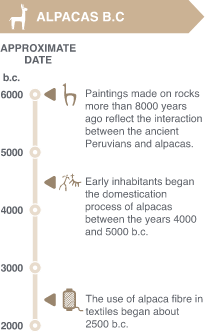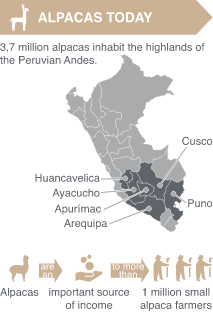There are two varieties of alpaca: Huacaya and Suri.
Huacaya are almost 90% of present-day herds. They are strong, robust animals whose medium- length fleece has a fluffy appearance. They are resistant to cold and diseases.
Suri are slim and delicate, with long shaggy hair often reaching nearly to the ground. When they're young they are weak and at birth are affected by the low temperatures and by changes of climate and food.
Alpaca fibre comes in more than 22 natural colours. These colours are classified into nine pure colours: white, light camel, camel, light brown, brown, grey, brown/black and black with many other subtle shades and hues.
Compared to other animal fibres, alpaca fibre has a low grease content ( 2,8 - 3,9%), which means that much less energy and chemicals are required to treat the water used for its washing process.
Alpaca fibre is an excellent insulator for both heat and cold. Due to this attribute, home products made of alpaca fibre like carpets, blankets, quilts and curtains are very well-known within the category of home products.


